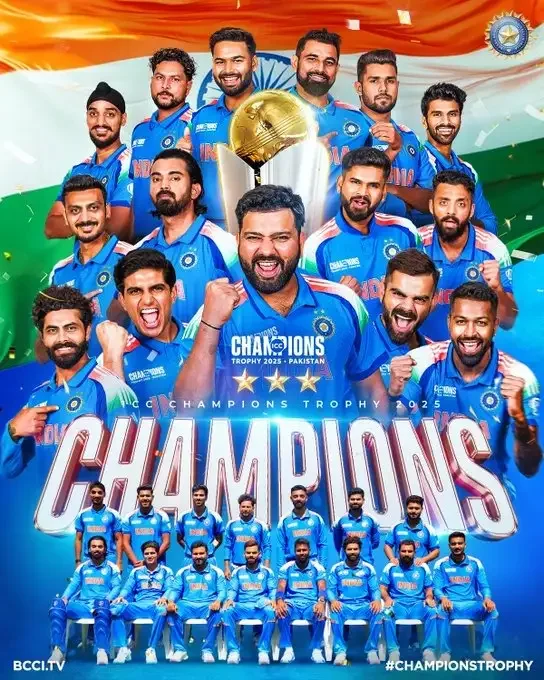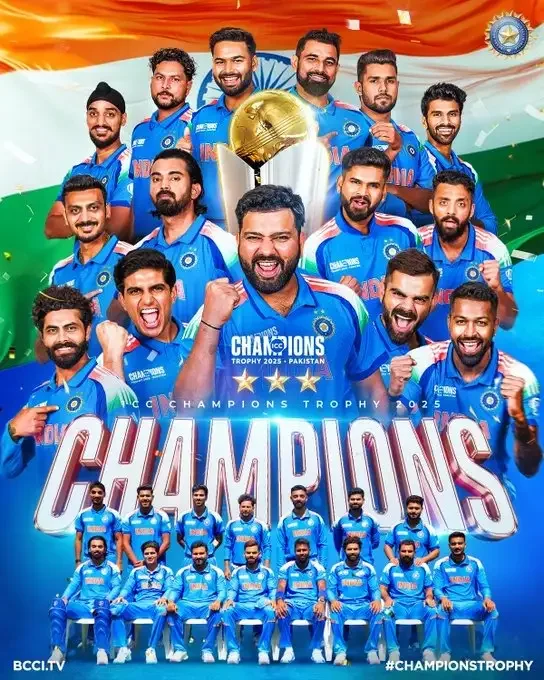Rise of the Blue Brigade India's Evolving Cricketing Legacy

Strong 8k brings an ultra-HD IPTV experience to your living room and your pocket.
India's cricket history is a tale of passion, tenacity, and change rather than merely one of bat and ball. India's national cricket team's path from modest beginnings in colonial-era contests to dominating the world arena is a story that reflects the nation's own ascent to prominence. Known as the "Blue Brigade," this cricketing force has had a dynamic evolution that has been full of memorable events, incredible comebacks, and inspirational leadership.
A Colonial Start to a National Passion
India’s introduction to cricket came during British rule, with the first recorded match taking place in 1721. However, it was not until 1932 that India played its first Test match, against England at Lord's. That match may have ended in defeat, but it planted the seed of a sporting culture that would soon grip a nation. Over the decades, cricket would grow from a game played by a privileged few to a unifying national obsession.
The Turning Point: 1983 World Cup
India’s real cricketing breakthrough arrived in 1983 when under the captaincy of Kapil Dev, the team stunned the world by winning the ICC Cricket World Cup. This unexpected triumph over the West Indies at Lord’s changed the perception of Indian cricket. Overnight, cricket became more than a sport—it became a symbol of national pride. Youngsters across the country began to dream of wearing the blue jersey, inspired by the sight of a jubilant Indian side lifting the coveted trophy.
The 1990s: Building a New Identity
The 1990s marked a transformative era for India cricket. It saw the emergence of legendary players like Sachin Tendulkar, Rahul Dravid, Anil Kumble, Sourav Ganguly, and VVS Laxman. These athletes not only brought international success but also helped reshape the image of the India national cricket team. Their performances, particularly overseas, gave Indian cricket fans reasons to believe in their team's potential. Television coverage expanded during this time, making cricket a household affair and turning players into celebrities.
Entering the 21st Century: Professionalism and Strategy
The dawn of the 21st century saw India cricket adopt a more strategic and professional approach. The team’s preparation, fitness, and game planning became more scientific and data-driven. Leadership transitioned from Sourav Ganguly to Rahul Dravid, and then to Mahendra Singh Dhoni, each captain adding a new layer to the team’s identity.
Dhoni, in particular, revolutionized Indian cricket with his calm demeanor and sharp tactical mind. Under his leadership, India won the inaugural ICC T20 World Cup in 2007, the ICC Cricket World Cup in 2011, and the Champions Trophy in 2013. These victories cemented India's reputation as a global cricketing superpower and made Dhoni one of the most successful captains in the game’s history.
Champions Trophy 2013: The Unbeaten Streak
The Champions Trophy victory in 2013 was a special chapter in India cricket. Under Dhoni, the team remained unbeaten throughout the tournament. Young talents like Shikhar Dhawan, Virat Kohli, and Rohit Sharma showcased their skill and temperament on the world stage. The victory was particularly significant as it came during a period of transition for the team, with several veterans retiring and a new generation stepping up to carry the baton forward.
The Kohli Era: Fitness and Aggression
With the rise of Virat Kohli, the India national cricket team entered an era characterized by aggressive gameplay, fitness-focused regimes, and consistency in all formats. Kohli’s tenure as captain emphasized dominance across conditions, and he set high standards with the bat and in terms of personal fitness. The team became known for its fast-bowling attack, with Jasprit Bumrah, Mohammed Shami, and others spearheading India's success on foreign pitches—a feat once considered difficult for Indian teams.
During this phase, India reached the top of the ICC Test rankings and produced memorable series wins, including a historic Test series victory in Australia in 2018–19. While an ICC title eluded Kohli’s leadership, his impact on Indian cricket’s professionalism and global competitiveness remains undeniable.
Rise of the IPL: Breeding Ground for Talent
The Indian Premier League (IPL), launched in 2008, played a transformative role in the evolution of India cricket. It provided a platform for young cricketers to share dressing rooms with international legends, fast-tracking their development. The league also brought innovation to strategy, training, and fan engagement. Players like Hardik Pandya, Jasprit Bumrah, and Rishabh Pant emerged from the IPL, ready to contribute to the national team’s ambitions.
The IPL also shifted the commercial landscape of cricket, making India the financial hub of the sport. The league's massive following and its entertainment value expanded the game's reach across the globe.
Challenges and Adaptability
Despite its many successes, the India national cricket team has faced challenges. Injuries to key players, over-reliance on top-order batters, and high-pressure losses in knockout matches have tested the team. Nevertheless, Indian cricket has shown remarkable adaptability. The depth in talent has allowed the team to field competitive lineups even when key stars are unavailable.
Recent years have witnessed a conscious effort to build bench strength. Rotating players, grooming captains like Rohit Sharma and Hardik Pandya, and nurturing young bowlers reflect a long-term vision. Domestic structures, including the Ranji Trophy and India A tours, continue to provide a steady flow of capable players.
Women’s Cricket: A Parallel Rise
While the focus often remains on the men’s team, women's cricket in India has gained significant momentum. Performances in the 2017 Women’s World Cup and the 2020 T20 World Cup have brought attention and admiration. Players like Mithali Raj, Harmanpreet Kaur, and Smriti Mandhana have become role models for aspiring cricketers across the country. With the launch of the Women's Premier League (WPL), the future looks bright for women’s cricket in India as well.
Looking Ahead
As the team heads into future ICC events and bilateral series, expectations remain sky-high. Fans yearn for consistency in ICC knockout games and a fresh Champions Trophy win. With a mix of seasoned players and rising stars, the India national cricket team is well-positioned to continue shaping its legacy.
Leadership will be key. While Rohit Sharma leads with composure, emerging leaders like Shubman Gill, Ruturaj Gaikwad, and Yashasvi Jaiswal signal a new chapter. These players represent the aspirations of a young India: bold, skillful, and unafraid of global challenges.
Final Opinion
The rise of the Blue Brigade is a reflection of India’s growth on the world stage—not just in sport, but in culture, technology, and ambition. The journey of India cricket from colonial pastime to global dominance is both inspiring and ongoing. With each new tournament, from World Cups to the Champions Trophy, the team carries the hopes of a billion hearts.
And as long as there's a ball to bowl, a bat to swing, and dreams to chase, the story of Indian cricket will continue to evolve—gloriously, passionately, and relentlessly.
Note: IndiBlogHub features both user-submitted and editorial content. We do not verify third-party contributions. Read our Disclaimer and Privacy Policyfor details.



